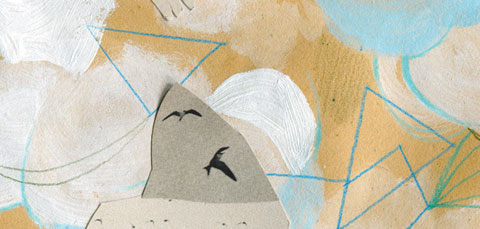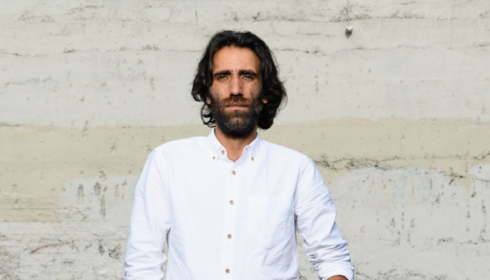
This article is part of our March theme, which focuses on an ongoing challenge to Australian society: Race & Discrimination. Read our Editorial for more on this theme.
People assume a lot of things about those who are racially marked and considered different from their own. Ways of being part of a community, for example. It has taken me decades to find what I would call my own community, and it isn’t the one in which others might automatically place me.
I grew up in 1970s Brisbane, and had the classic Asian Australian experience of being one of only a handful of Asian students at school. I had the “character-building” experience of being teased with the “Ching Chong Chinaman” rhyme, and admonished by my mother for crying about it. I look back now to what my mother must have been going through as a new migrant to Brisbane: not fluent in English, leaving a whole life-time of family and friends back in Malaysia, diligently striving for us to enter into the habits and norms of the new country, and with my father away for long periods of time with work. I would’ve probably admonished me, too.
It’s something that many writers and critics have already commented on, but the feeling that you’re not meant to hang out with other Asians was remarkably strong and implicit. I don’t even know where I felt this pressure coming from, but there it was. That said, it’s not as if I was likely to hang with my peeps when there were barely half a dozen of us.
Perhaps not surprisingly, my friends through all my schooling and university days were Anglo/European-Australians. Except for some dabbling in race, gender and literary studies in the third year of my Arts degree at the University of Queensland, I didn’t really engage with racial theory or diasporic Asian studies till I was undertaking my Masters. My topic was Asian Australian women writers, and it felt tough trying to mark out that particular area because ‘Asia’ was well embedded in the Australian psyche and, basically, it was always somewhere else. Not here, not in our backyard, not within our communities. Trying to write about the perspectives of Asian Australian authors, characters, narratives and voices required training myself to say “authors of Asian descent” and have an explanation ready about what this actually meant.
‘Asian Australian’ didn’t really have currency yet, and people often assumed I meant Asia+Australia (as in: perspectives of Asia from Australia, with material that fell into the cultural diplomacy or international relations baskets).
For many years, the notion of an assertive, pro-arts Asian Australian community remained a theoretical fantasy. This fantasy was fed by pockets of Asian American Studies material I’d find in the libraries, and Asian American novels like Mona in the Promised Land and Typical American (Gish Jen) and The Woman Warrior (Maxine Hong Kingston). I remember being very taken with the idea of how Asian American Studies grew in the USA from the civil rights movement, and how it emerged as a new and dynamic field. Students and academics, many of them Asian American themselves, were discussing Asian American identities, stereotypes and North America’s exclusionary dynamics! There was momentum, courses, majors!
This was the kind of thing I wanted here: articulate Asian communities who knew their rights and would fight for them, groups who understood what it meant to be racially marked and seemed to be so well represented in the public sphere, with enough momentum and investment in Asian Australian cultural pursuits that they could have writing, film and visual arts organisations dedicated to community creative work and advocacy.
When I started my doctoral studies in 1996, Pauline Hanson and her One Nation Party were on the rise and went on to capture the hearts of Australians who felt they’d been disenfranchised by minority groups such as Indigenous and Asian Australians. In retrospect, it was a time that was shocking, exciting, and dynamic.
There was an increasing fierceness in some Asian Australian groups and individuals that stirred me. I was starting to think that maybe I wouldn’t change the whole world, but I could sure change my part of it.
It was at the tail end of the 1990s that what I considered my community started forming. It began as a group who were interested in “Asian Australian Studies” (a field which didn’t yet exist). We’d all read similar combinations of critics and texts, and the feeling of finding others who ‘got’ what I was trying to do with my research was intoxicating. The vision of my more senior colleagues at that time – Jacqueline Lo and Helen Gilbert – was inclusive of creative practitioners and interested members of the general public. It was a scholarly network, for the most part, but it always had a fair number of writers, artists and community arts workers as members. Many of the writers were being read in constrained ways, categorised and experienced by (mostly Anglo) readers as ‘ethnic’ or ‘multicultural’ writers. There are shelves of literary studies that go into greater depth about these issues so I won’t rehearse them here – suffice it to say that part of my research drive came from wanting to erode clichéd notions of what Asian Australian writers should write or be, and transform understandings of literary work on minority literatures from being only about migrant experiences that were divorced from Australian stories.
It has been about sixteen years since I started my PhD, and a dozen since the Asian Australian Studies network started coming together. In that time, I’ve convened fantastic, nourishing events that inspired me to keep investing my time and resources in growing the field. Many of our members from those establishment days are still with us, and their growing influence through bodies of work, in institutional hierarchies, and having gained broader community profiles means that the network has expanded and even nurtured more specific networks of its own (e.g. the Asian Australian Film Forum and Network [AAFFN], newly formed in 2011).
What is it about this Asian Australian research network that makes me feel it’s my community? I think it’s the fact that members of the network are generally aware of the politics and societal ramifications of racism, exclusion, and stereotyping (and its more insidious cousins, scapegoating or vilification). Almost all members of the network focus on ways to shift these dynamics, whether it’s through research and policy change, pushing expectations about their art and productions, or being activists in a range of social justice issues. Just by doing the things they do, they create new Australian perspectives and identities. What started for me as an academic exercise in building intellectual momentum has become a network that also feeds me politically and socially.
So much more takes place outside of the network, of course, and part of the joy of having the network is discovering ways to support and promote people with their endeavours. What we don’t have in funding, we make up for in zeal (and social media pushiness). The international dimension to diasporic Asian studies also means that our connections with North America, Europe, and Asia are richer in possibility now than ever before.
Over the years, through my research and from talking with scholars and creative sorts, I’ve come to recognise that my idealised Asian American community is just as contested and beset by intra-communal tensions as any other, and that many of their initiatives are considered insecure and the work of a dedicated few.
That’s just the way community groups get by and, oddly enough, it comforts me. These facets don’t stop fantastic collaborations and inspiring events from happening.
Finding and building a community I could relate to has taken many years, and I’m still most often presumed to be part of a general Chinese or Malaysian community. While I don’t studiously distance myself from those groups, they haven’t often been the clusters through which I’ve found constructive stimulus and challenge. To me, these latter aspects are the best parts of finding belonging in a group and, even though communities must all change over time, it feels like home for now.
Tseen Khoo currently works as a Senior Advisor (Research Development) at RMIT University. Previously, she has been a research fellow at Monash University and the University of Queensland. Tseen’s work focuses on Asian Australian cultural production and politics, multicultural/race issues in Australia, and diasporic Asian studies. Tseen was a Chief Investigator on an ARC Discovery project (“Being Asian in Australia and the United States”; 2008-2010) with Dean Chan and Jacqueline Lo. As well as being founding convenor for the AASRN, she is a founding editorial advisor for Peril (an Asian Australian arts and culture magazine). Tseen is also on Twitter: @tseenkhoo
For more information about the Asian Australian Studies Research Network:
- Visit the website
- Follow on Twitter (@aasrn), or
- Join the Facebook group


